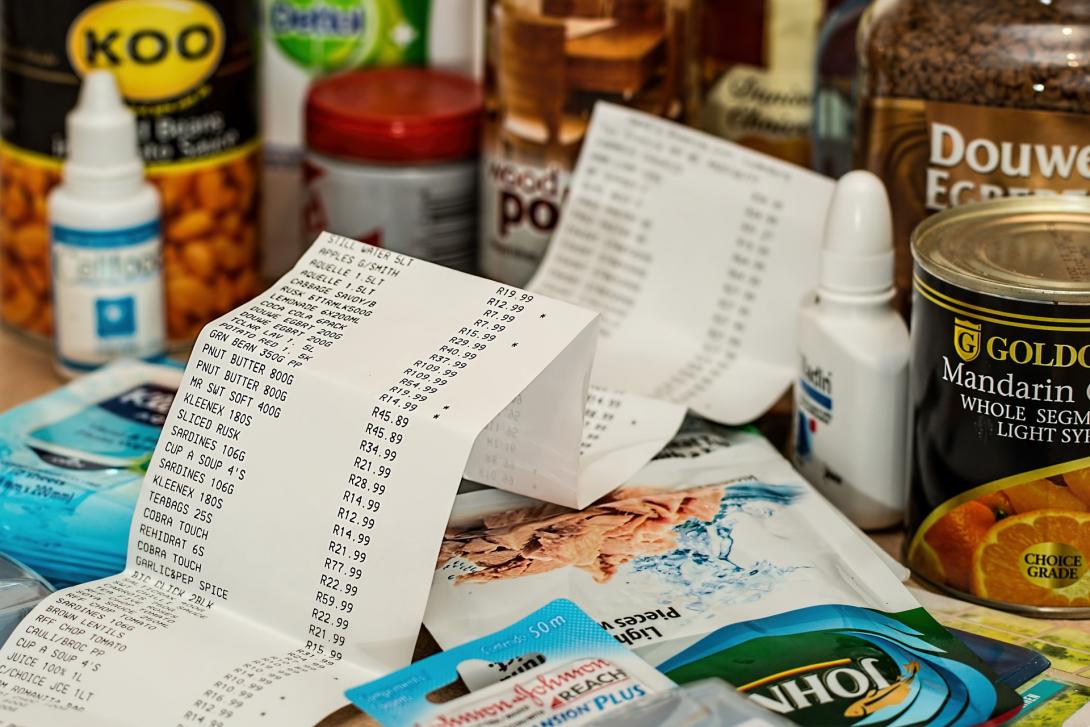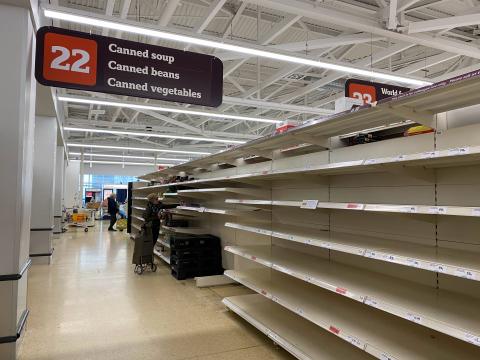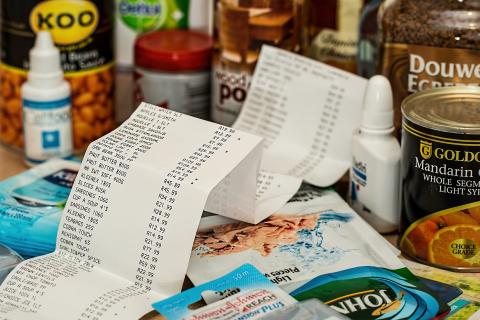15 December 2021
Food Prices Tracking: December Update

by Shona Goudie and Rebecca Tobi
Food price inflation over recent months is an area of growing concern. In this blog we look at what has happened to food prices in the past month and what we might expect to happen next.
What has happened over the past month?
Overall Inflation
The Consumer Price Index (CPI) rose by 5.1% in the 12 months to November 2021, up from 4.2% in October1. This represents a 0.7% increase between October and November 2021, compared with a fall of 0.1% this time last year in November 2020. This is a concerningly large increase in the cost of living, with the Bank of England having forecast just a few months ago that inflation would not hit the 5% mark until April 2022, and is much higher than their 2% target2. Earlier this week, the International Monetary Fund predicted it will hit 5.5% next year3.
Increased energy prices are a major driver of the overall increase in inflation with electricity prices 18.8% higher than a year ago and gas prices 28.1% higher4 For many this will mean having to choose between eating and heating in the coming months.
UK Food Prices
November 2021 has seen take-home retail food prices increase by 2.37% since the start of this year (January 2021), and an increase of 2.84% compared to before the pandemic in January 20205.
Of particular concern is the increase in costs last month for healthier foods such as fruit and vegetables, as well as starchy staples which form the bulk of our diets in the UK. The price of those fruits tracked in the CPI’s basket rose by almost 2% (1.94%) this month compared to October 2021, with vegetables also increasing in price although somewhat more modestly (0.11% compared to the preceding month). Prices of both fruit and veg remain higher than they were in January 2020, the third month in a row that this has been the case.
The CPI also shows increases in the price of starchy staples and animal proteins, with starchy staples 1.66% higher than at the beginning of this year and meat and fish products 1.06% higher.
At a product level, certain foods increased by particularly large amounts last month. The price of pasta was 5% higher than in October, a whopping 16% increase on the start of this year and the price of bread and cereal is also going up.
The confectionary category increased by 1.43% compared to October 2021, with the price of festive favourites such as a box of chocolates and chocolate biscuits increasing particularly notably, both 5-6% more costly in November.
These increases are continuing to be driven by fuel and labour shortages and supply chain issues that have been occurring for several months. For more information on this see our earlier blog on Why are food prices rising?
UK Agricultural Prices
Interestingly, we can see from the UK’s Agricultural Price Index, (a monthly Government publication that reflects the price farmers receive for their products) that the amount paid to farmers for fruit and veg is not increasing in line with retail price rises.
The month on month point change in fresh fruit farmgate prices was down by 3.4 points in September with veg increasing by 0.1 points, although as more data is released for October and November we may see this change.
While agricultural prices are a couple of steps removed from the prices citizens pay when buying their food, it is a useful way of tracking trends for the prices received by producers for agricultural products (e.g. wheat, cattle, vegetables) and indicative of how the food chain is functioning more widely. For more information see our food price tracker.
Global Food Prices
The FAO’s food price index, which tracks global food prices for key commodities, indicates that global food prices are now 27% higher than they were this time last year, in November. After adjusting for inflation, food prices in 2021 are the highest in 46 years according to Yale Climate Connections6.
Prices are 1.2% higher in November 2021 than in the preceding month – the fourth month in a row that there has been a rise with global food prices now at their highest level since June 20117. The price of cereals and dairy rose the most in November, while the price indices for meat and vegetable oils were slightly down from the previous month.
Wheat has been the main driver of higher food prices, up almost 40% in the last year due to poor harvests from droughts and high temperatures across Canada, Russia and the US8. This sharp increase in the price of wheat globally is affecting the price of wheat based products in the UK9.
Global fertiliser shortages affecting farmers worldwide are also contributing to food price inflation. Reuters report that fertiliser prices have increased by 80% this year10,11. Shortages are likely to continue into next year which will add to increased food prices but also could result in reduced application to crops with possible knock-on effects on yields.
Public Concern and Experience
The public are becoming increasingly aware of food shortages and increasing prices. An FSA poll found that 53% reported that there was at least one type of product unavailable when doing their food shop of which the most commonly unavailable foods were fruit, veg, milk, bread and frozen foods12. Similarly, a poll by Which? discovered 56% of people are concerned about food shortages13. Concern was even higher regarding food prices at 76%. Similarly, the FSA reported 71% of people are concerned about food prices with 60% reporting that they had noticed their food shop has increased in price12. The ONS found an even higher percentage reporting experiencing food price increases at 87%14.
What will happen over Christmas?
Food prices
Predictions across the board are that food will be slightly more expensive over the Christmas period but retailers will do their best to keep costs down to avoid losing customers at their busiest time of year 15, 16.
Predictions vary as to how much more expensive it will be and which foods will be most affected. Kantar estimate that a typical Christmas dinner will be 3.4% more expensive this year than last year (approximately £27.50 more for a family of four) due to increases in the prices of turkey, cauliflower and sprouts, but slightly offset by cheaper carrots, parsnips and potatoes17. The CEBR predict turkey will only be 1.3% more expensive18 compared to Kantar predictions of 7%, and conversely, have said that brussels sprouts will be marginally cheaper. The Guardian again paint a slightly different picture of the overall cost of Christmas dinner being up 6% with carrots being more expensive (up 7%), brussels sprouts up 11%, and turkey up 4%19.
Food shortages
Food shortages are unlikely to be severe over Christmas although there may be reduction in ranges of products available. Fears around turkey shortages appear to have subsided suggesting the government’s temporary visa scheme has helped alleviate the issue20, 21. However, the National Pig Association have said their sector is in meltdown due to ongoing worker shortages22, and emergency visa scheme workers are not expected to start until January23. AHDB and the British Meat Processors Association say there will be less of things such as pigs in blankets which are labour intensive to produce, although the overall supply of pork, sausages and bacon shouldn’t be affected by the recent supply chain issues24.
Some veg shortages are expected with demand for fresh produce increasing 30% in the two weeks up to Christmas25. This is similarly due to labour issues rather than availability of produce.
What could happen next?
Earlier this week, food industry representatives warned that the UK is facing a worsening food supply chain crisis and have called on Government to take further action26.
All predictions point to food prices continuing to rise in 2022. Rabobank (a farming specialist bank) predict that even if Covid disruptions improve, global food prices are likely to remain high due to weather shocks, fuel and labour shortages and wider inflation (i.e. fuel, packaging) all likely to continue. AHDB have advised that UK prices are following global trends and if global prices continue to rise then there is scope for UK prices to do the same27.
Capital Economics have predicted a 2.3% increase in food prices within the next three months28, while the Bank of England have predicted an even bigger increase of 5% over the coming year29.
Although it is thought that supermarkets will do all they can do keep prices low over Christmas, this will not be sustainable in the long term and price rises seem increasingly likely to pass through to the consumer in 202230.
For more information on food prices see our Food Price Tracker.

Shona joined The Food Foundation as a Project Officer in 2019 and has worked on research, policy and advocacy across a range of projects over that time including leading our food insecurity surveys and flagship annual Broken Plate reports. She now works across the charity's policy portfolio including our children's food campaigns, food insecurity and food environments. She is a Registered Associate Nutritionist with a background in clinical nutrition who worked in dietetic departments in NHS hospitals before joining The Food Foundation.

Rebecca joined the Food Foundation in January 2020, leading on the Peas Please initiative. These days she manages our food business transformation team, with oversight of our work engaging food businesses, investors and policy-makers with the need to transition the UK towards a more sustainable and healthy food system. This includes our Plating Up Progress and bean projects.
Rebecca is a Registered Nutritionist (RNutr) with a background in science communication, joining the Food Foundation from the Nutrition Society. In a previous life, Rebecca worked in the marketing and tech sectors before deciding to move into nutrition, obtaining a MSc in Nutrition for Global Health at the London School of Hygiene and Medicine.
Rebecca is a bean obsessive, a staunch advocate for evidence-based nutrition communication, and is passionate about the structural changes that make healthy and sustainable diets accessible for all.




